This article was medically reviewed by Sarah Gehrke, RN, MS. Sarah Gehrke is a Registered Nurse and Licensed Massage Therapist in Texas. Sarah has over 10 years of experience teaching and practicing phlebotomy and intravenous (IV) therapy using physical, psychological, and emotional support. She received her Massage Therapist License from the Amarillo Massage Therapy Institute in 2008 and a M.S. in Nursing from the University of Phoenix in 2013.
There are 14 references cited in this article, which can be found at the bottom of the page.
This article has been viewed 1,141,893 times.
Sexual intercourse with the intention of avoiding a resulting pregnancy requires planning. With family planning skills and contraceptives available to sexually active people today, pregnancy does not need to happen if you are careful and attentive. You can avoid pregnancy by abstaining from intercourse, using contraceptives if you are sexual active, or talking to your health care provider about hormonal or surgical forms of birth control.
Steps
Abstaining From Vaginal Sex
-
1Learn what it means to abstinent. Abstinence is a method used by many people to prevent pregnancies and sexually transmitted diseases.[1] It can be practiced in a variety of ways for many reasons. No one definition is the right one, but the overarching theme and purpose for abstinence is to prevent pregnancies and STDs.
- Outercourse is a form of abstinence where people abstain or avoid vaginal sexual intercourse. This means all other forms of sexual play can be practiced.
- Abstinence can also be defined by not engaging in any sexual activities with a partner.
-
2Engage only in outercourse. Keeping sperm from reaching the vagina is an effective way to prevent pregnancies. Instead of engaging in sexual intercourse that includes vaginal penetration by the penis, try:[2]
- Kissing
- Masturbating
- Fondling
- Rubbing
- Acting out sexual fantasies
- Using sex toys
- Oral sex
- Anal sex
Advertisement -
3Talk to your partner about the advantages and disadvantages of abstinence. Many people find it difficult, but when it comes to preventing pregnancy it is the cheapest and most effective way not to have a baby. It also has no medical or hormonal side effects compared to other methods that help prevent pregnancies.
- The benefits of practicing abstinence can go beyond preventing unintended pregnancies. Abstinence can be practiced until you're ready to have sex or until you have found the right partner to have sex with. It can be a way for you to be in a romantic relationship without being sexually active. Or it can serve to symbolize a moral or religious choice.
- The disadvantages to abstinence come from people who find it hard to abstain from sex and who jump into sex without properly educating themselves or protecting themselves against pregnancies and STDs.
-
4Find a partner that respects your choice to be abstinent. It can be difficult to be in or continue to be in a relationship with someone who does not believe in being abstinent. It's best to speak to your partner about your choice and explain to them what abstinence is and why you have chosen to practice it.
- Talk to your partner before things get sexual. It's always helpful and important to communicate with your partner what you expect from a relationship and what boundaries you may or may not have. Determining what is allowed or appropriate within your relationship can help clarify and prevent misunderstandings when you engage in any sexual activity.
- Being abstinent is not forever unless you want it to be. Your relationship and beliefs can change with time or experience.
Using Barrier Methods of Birth Control
-
1Use condoms when engaging in sexual activity. When used correctly and consistently, condoms can help prevent pregnancy while still enjoying sex. There are a variety of colours, flavours, and textures available to use. You can buy them at a drugstore or get them for free at health clinics.
- Female condoms are also available to be worn. Just like condoms for penises, female condoms collect pre-ejaculate fluid and semen.[3] However, they are less effective than male condoms.[4]
- When used and applied directly, condoms are an effective method to prevent pregnancies. It's important you learn how to wear a condom, read the expiration date, and inspect that the condom is in working order. However, 18 out of 100 women have a chance of getting pregnant with condom use alone.[5]
-
2Use spermicide to aid in pregnancy prevention. Spermicide is a gel, foam, or film that is applied to a condom and works by blocking the entrance of the uterus with a sperm-killing chemical.[6] They can be purchased at drugstores, pharmacies, and retailers or can be found already applied to certain brands and types of condoms.
- When used alone, vaginal spermicides are only 78% effective but if combined with a condom, the effectiveness increases to 95% or greater.
- For added protection, women may consider spermicides. Women should lie on their back briefly after engaging in intercourse to ensure the spermicide stays against the cervix.
- Spermicide can cause infections in both the vagina and penis and cause irritation to develop. Consult your health care provider if irritation or discomfort arises after using spermicide.
-
3Use a contraceptive sponge. The contraceptive sponge is a small, donut-shaped sponge that contains a spermicide and is placed within the vagina and along the cervix. You and your partner should not be able to feel the sponge if it is inserted correctly. The sponge is not as widely available as condoms and spermicides and they are often more expensive. Talk to your pharmacist if you cannot find one. To use a contraceptive sponge:[7]
- First, wet the sponge with 2 tablespoons (30 mL) of water to activate the spermicide. Squeeze out the excess water.
- Insert the sponge into the vagina by sliding the sponge along the back wall until the reaches the cervix. The dimpled or concave side should face your cervix and the loop should face away for easy removal afterwards.
- Leave the sponge in for a total of 24 hours. You should leave it in for at least 6 hours after you have vaginal intercourse.
- Take out the sponge by washing your hands and taking a hold of the loop and then pulling it out of the vagina carefully. Make sure the sponge is in one piece after you have removed it.
-
4Get fitted for a diaphragm. A diaphragm works similarly like a contraceptive sponge. Instead, the diaphragm is made of rubber with a flexible rim. Unlike the contraceptive sponge, diaphragms come in different sizes. Your doctor will measure your pelvis and order a diaphragm that you can insert before any sexual activity to prevent pregnancy. You can remove the diaphragm 6 hours after intercourse or after a 24 hour period.
- Note that diaphragms do not protect you from STIs.
Using Prescribed Hormonal Birth Control
-
1Talk to your doctor about a prescription for birth control pills. Birth control pills work by either keeping eggs from leaving the ovaries or making cervical mucus thicker which keeps sperm from travelling to the eggs.[8] There are several different brands your health care provider can recommend one that is best for your health and sexual activity.
- Discuss side effects and risks associated with any birth control you are prescribed. For example, women over 35 who smoke are more susceptible to blood clots when they take birth control pills.
- Birth control pills require you to diligently take the medication at the same time, every day. A missed dose could potentially increase the likelihood of pregnancies if sex is engaged in the period it is missed.
-
2Ask for a birth control shot. The birth control shot, or Depo-Provera, is an injection of synthetic hormones that protects you from pregnancy. You will need to get a shot every 12 weeks.[9]
- Depo-Provera releases a hormone called progestin which prevents the body from releasing eggs into the uterus and thickening the cervix mucus wall to prevent sperm from travelling.
- Always discuss health risks and side effects whenever you decide to take birth control.
-
3Use an emergency contraceptive if your primary method of birth control does not work. Dubbed as the Morning-After Pill, emergency contraceptives work by preventing eggs from being released from the ovary for longer than usual. This ensures that any rogue sperm dies off or is expelled from your body. These are most effective when used within 3 days of unprotected sex.[10] Emergency contraception cannot be used as a regular way to prevent pregnancy.
- Purchase emergency contraception in pill form over the counter at a pharmacy. Over-the-counter emergency contraception comes in 1 pill dose of Levonorgestrel (called Plan B One-Step, Next Choice One Dose, After Pill, Take Action, and My Way).[11] Take the pill as directed.
- A 2-pill dose of emergency contraception requires a prescription.[12]
- Another type of emergency contraception is a copper intrauterine device (IUD). It’s a T-shaped device that is inserted in the uterus by a healthcare provider. This form of emergency contraception can be used up to 5 days (120 hours) after unprotected sex.
Considering Sterilization
-
1Ensure sterilization is the right choice for you. Make sure you do not ever want to get pregnant before choosing a surgical form of birth control. You should not undergo surgery to prevent getting pregnant if you might want to have more children one day in the future.[13]
- Many people sterilize because they do not want to put their health at risk, or would not like to pass on a certain disease or genetic mutation to their offspring or children.
- Sterilization is a serious matter that affects not only you and your body, but also those around you. If you have a partner or family, it's important to discuss with them the decision to go ahead and sterilize. Of course, in the end, it is your body and you should be able to do what you want with it.
-
2Try non-surgical sterilization methods. Essure is a permanent birth control procedure that creates a natural barrier against pregnancy. This procedure can be performed in a doctor's office in less than 10 minutes. A device will be inserted into each fallopian tube so that scar tissue forms, blocking the fallopian tube and preventing the sperm and egg from coming together.[14]
- You will need to use an additional method of birth control for 3 months after the procedure. It takes about 90 days for the scar tissue to develop in your fallopian tube and for the procedure to take effect.
- This procedure is permanent and cannot be reversed.
-
3Undergo a surgical sterilization. Commonly called a tubal ligation or getting the "tubes tied," a woman's fallopian tubes can be surgically tied, cut or sealed.[15]
- Males can have a vasectomy to ensure pregnancy is prevented. A vasectomy works by cutting off the vasa deferentia or tubes that carry sperm from the testicles to the penis shaft. The sperm is absorbed by the body instead of travelling out.[16]
Expert Q&A
Did you know you can get expert answers for this article?
Unlock expert answers by supporting wikiHow
-
QuestionIs there a chance to get pregnant even if just the head of the penis is inside of a girl?
 Sarah Gehrke, RN, MSSarah Gehrke is a Registered Nurse and Licensed Massage Therapist in Texas. Sarah has over 10 years of experience teaching and practicing phlebotomy and intravenous (IV) therapy using physical, psychological, and emotional support. She received her Massage Therapist License from the Amarillo Massage Therapy Institute in 2008 and a M.S. in Nursing from the University of Phoenix in 2013.
Sarah Gehrke, RN, MSSarah Gehrke is a Registered Nurse and Licensed Massage Therapist in Texas. Sarah has over 10 years of experience teaching and practicing phlebotomy and intravenous (IV) therapy using physical, psychological, and emotional support. She received her Massage Therapist License from the Amarillo Massage Therapy Institute in 2008 and a M.S. in Nursing from the University of Phoenix in 2013.
Registered Nurse
-
QuestionIs it safe to have sex with only a condom if I have to stop taking my birth control pills?
 Sarah Gehrke, RN, MSSarah Gehrke is a Registered Nurse and Licensed Massage Therapist in Texas. Sarah has over 10 years of experience teaching and practicing phlebotomy and intravenous (IV) therapy using physical, psychological, and emotional support. She received her Massage Therapist License from the Amarillo Massage Therapy Institute in 2008 and a M.S. in Nursing from the University of Phoenix in 2013.
Sarah Gehrke, RN, MSSarah Gehrke is a Registered Nurse and Licensed Massage Therapist in Texas. Sarah has over 10 years of experience teaching and practicing phlebotomy and intravenous (IV) therapy using physical, psychological, and emotional support. She received her Massage Therapist License from the Amarillo Massage Therapy Institute in 2008 and a M.S. in Nursing from the University of Phoenix in 2013.
Registered Nurse
References
- ↑ http://www.plannedparenthood.org/learn/birth-control/abstinence
- ↑ https://lovematters.in/en/resource/outercourse
- ↑ https://www.ippf.org/blogs/myths-and-facts-about-withdrawal
- ↑ https://www.cdc.gov/reproductivehealth/unintendedpregnancy/pdf/contraceptive_methods_508.pdf
- ↑ https://www.cdc.gov/reproductivehealth/unintendedpregnancy/pdf/contraceptive_methods_508.pdf
- ↑ https://www.optionsforsexualhealth.org/birth-control-pregnancy/birth-control-options/barrier-methods/spermicides
- ↑ http://youngwomenshealth.org/2013/08/22/contraceptive-sponge/
- ↑ https://kidshealth.org/en/teens/contraception-birth.html
- ↑ https://www.plannedparenthood.org/learn/birth-control/birth-control-shot
- ↑ https://www.cdc.gov/reproductivehealth/contraception/mmwr/spr/emergency.html
- ↑ https://www.hhs.gov/opa/pregnancy-prevention/birth-control-methods/emergency-contraception/index.html
- ↑ https://www.hhs.gov/opa/pregnancy-prevention/birth-control-methods/emergency-contraception/index.html
- ↑ https://www.bedsider.org/features/94-permanent-birth-control-so-many-ways-to-tie-a-tube
- ↑ https://www.plannedparenthood.org/planned-parenthood-illinois/patient-resources/health-services/essure
- ↑ https://www.mayoclinic.org/tests-procedures/tubal-ligation/about/pac-20388360
- ↑ https://www.mayoclinic.org/tests-procedures/vasectomy/about/pac-20384580
About This Article
One of the easiest ways to prevent pregnancy is by wearing a condom when you have sex. You can find condoms at your local drug store or health clinic. Alternatively, if you’re a woman, you can wear a contraceptive sponge or a fitted diaphram, which is worn inside the vagina during sex to prevent pregnancy. For more long term protection, talk to your doctor about taking birth control pills. Keep in mind that these pills need to be taken every day, and a missed dose can increase the likelihood of you getting pregnant. If you’ve had unprotected sex, or you think your protection didn’t work, consider buying an emergency contraceptive pill. These pills can be bought over-the-counter at most pharmacies and are most effective within 3 days of unprotected sex. To learn how to use alternative sexual techniques, such as oral sex, to prevent getting pregnant, read more from Medical co-author!




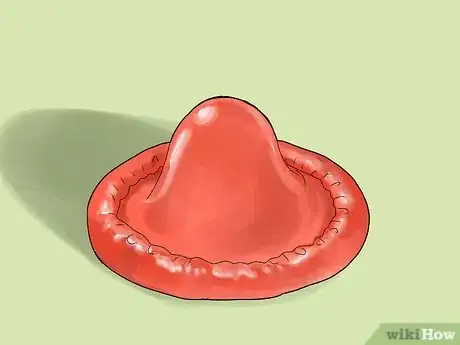

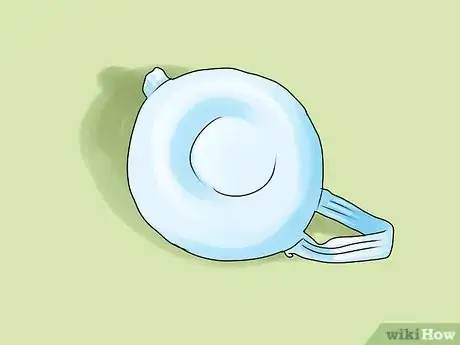

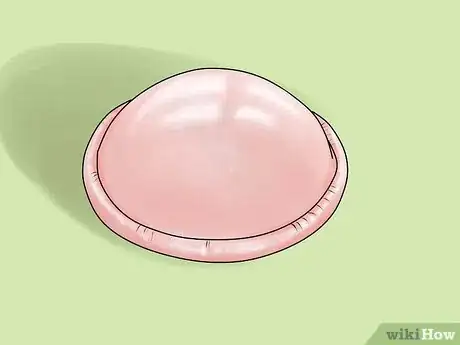



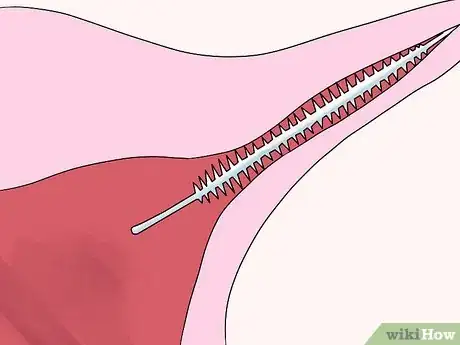





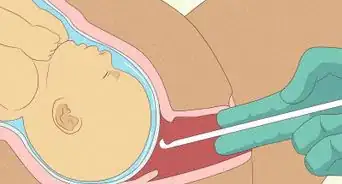




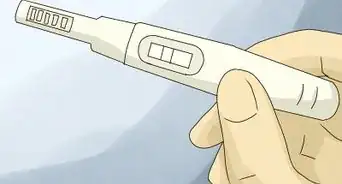
















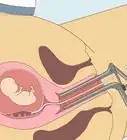




































Medical Disclaimer
The content of this article is not intended to be a substitute for professional medical advice, examination, diagnosis, or treatment. You should always contact your doctor or other qualified healthcare professional before starting, changing, or stopping any kind of health treatment.
Read More...